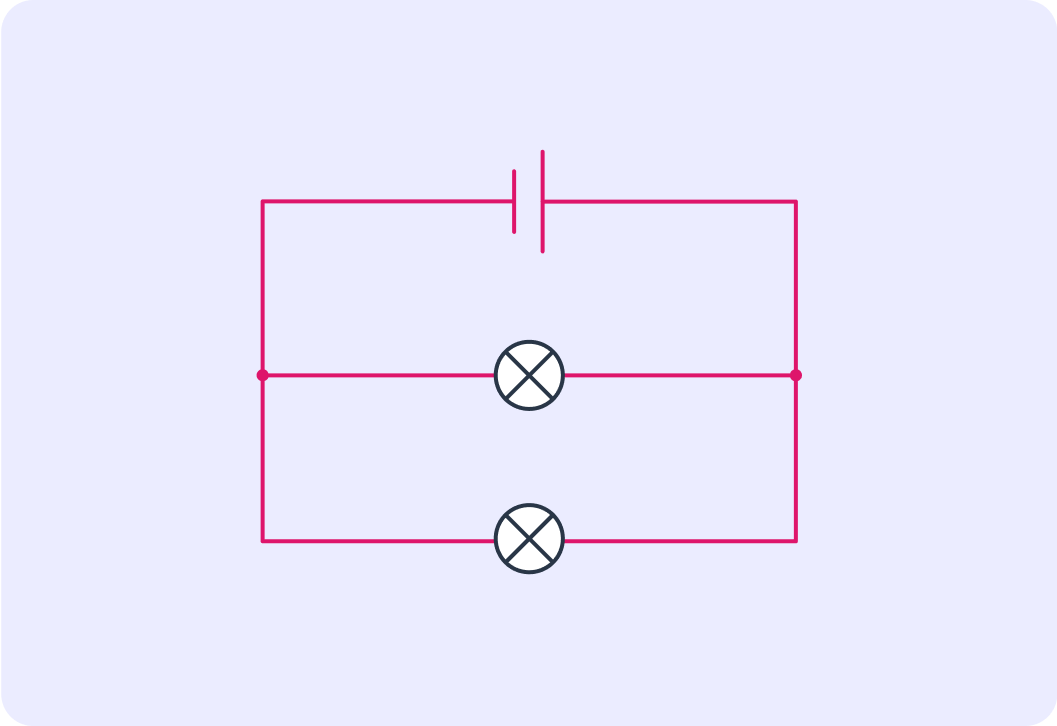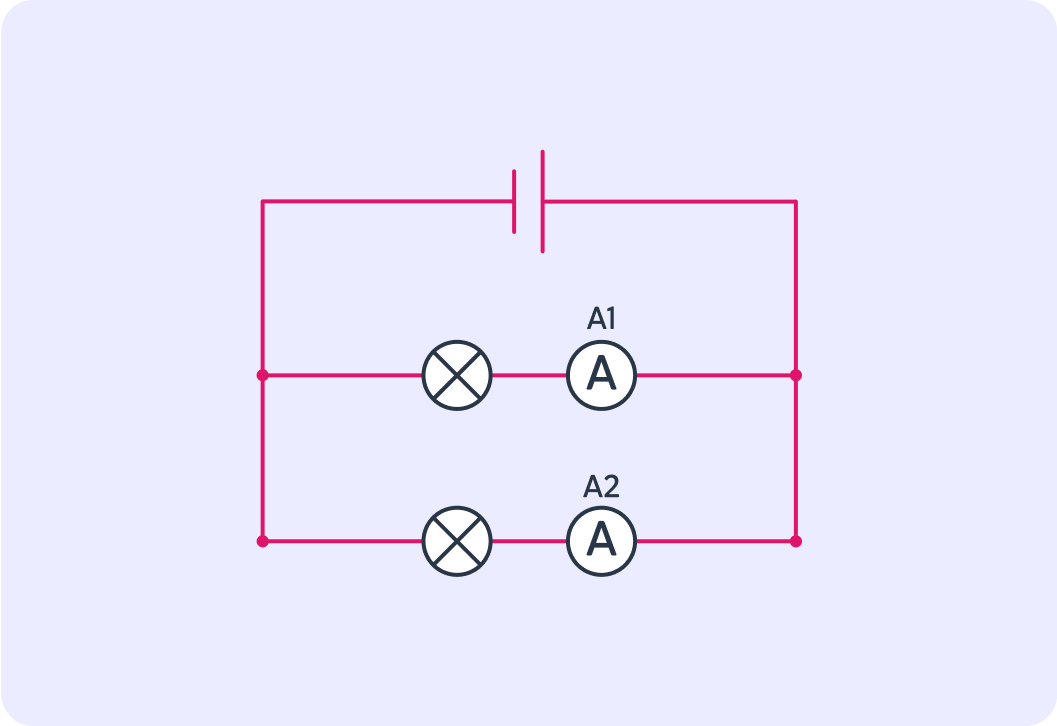YOU ARE LEARNING:
Parallel Circuits

Parallel Circuits
Here we look at what a parallel circuit is and how it differs from a series circuit. Its ability to split current across different branches makes it a good option for indoor lighting.
Is there more than one pathway in a parallel circuit?

In a parallel circuit, does all of the current flow through every component in the circuit?

This is a parallel circuit.
Each component is separately connected to the power supply.

In order to measure the current in a circuit we use ammeters. Are these connected in series or parallel?


So in a circuit it is possible to have components connected in series and in parallel. A component connected in parallel causes the current to be split at the junction so only some of it goes through the component. In series, all of the current flows through the component because it has nowhere else to go.
So remember, ****
parallel = more than 1 route for all the current to take. series = only 1 route for all the current to take.

Is the current in a parallel circuit the same at all points in the circuit?

The total current in a parallel circuit is the sum of the current through each of the branches. Which option states that correctly?
A)Atotal=A1+A2 B)A1=A2 C) Atotal=A2A1
Answer A,B or C.


The current in a parallel circuit is able to choose which branch it goes down. If two identical components are connected in parallel then the current will split evenly into each branch. If the reading is 40V on A1, what will be the reading on A2?


Does every component in a parallel circuit have a different potential difference?

This image shows that in a parallel circuit, all the components (the bulbs) are connected directly to the power supply (the battery).
This means that all components have the same potential difference.

Voltmeters are connected in parallel around each component they need to measure the potential difference across. Which one of these options generalises that all components have the same potential difference?
A) Vtotal=V1+V2
B) V1=V2
C) Vtotal=V2V1
Answer A, B or C.


If you add another resistor to a parallel circuit, you are creating a new branch which means more there can be more current I in total. Remember R=IV. What will adding a resistor in parallel do to the overall resistance of the circuit?

If you add a resistor in parallel, the total resistance of the circuit will decrease. This is because when you create a new branch, you increase the amount of current I a circuit can hold. If we make I bigger in this equation for resistance R=IV, resistance R gets smaller.
Which of the following is a good reason to use parallel circuits when setting up the lights at home?

In order for a circuit to work, the current needs to go around a complete loop. In a parallel circuit, the current can choose which pathway it follows. This means that if one component breaks or becomes unconnected, the rest of the components are unaffected. The current simply goes down a different branch. This is why it is used in the home for lighting. If one light goes out, the rest will still work.
Which of the following apply to a parallel circuit? Pick all the options you think are correct.

You can select multiple answers
In a parallel circuit the pathway for the current is split at junctions between different branches. The total current of the circuit is the sum of the current across each branch. Given that each component is attached directly to the power source, the potential difference is the same for each component. The opposite is true of a series circuit, where there is only one route for the current to flow through.
